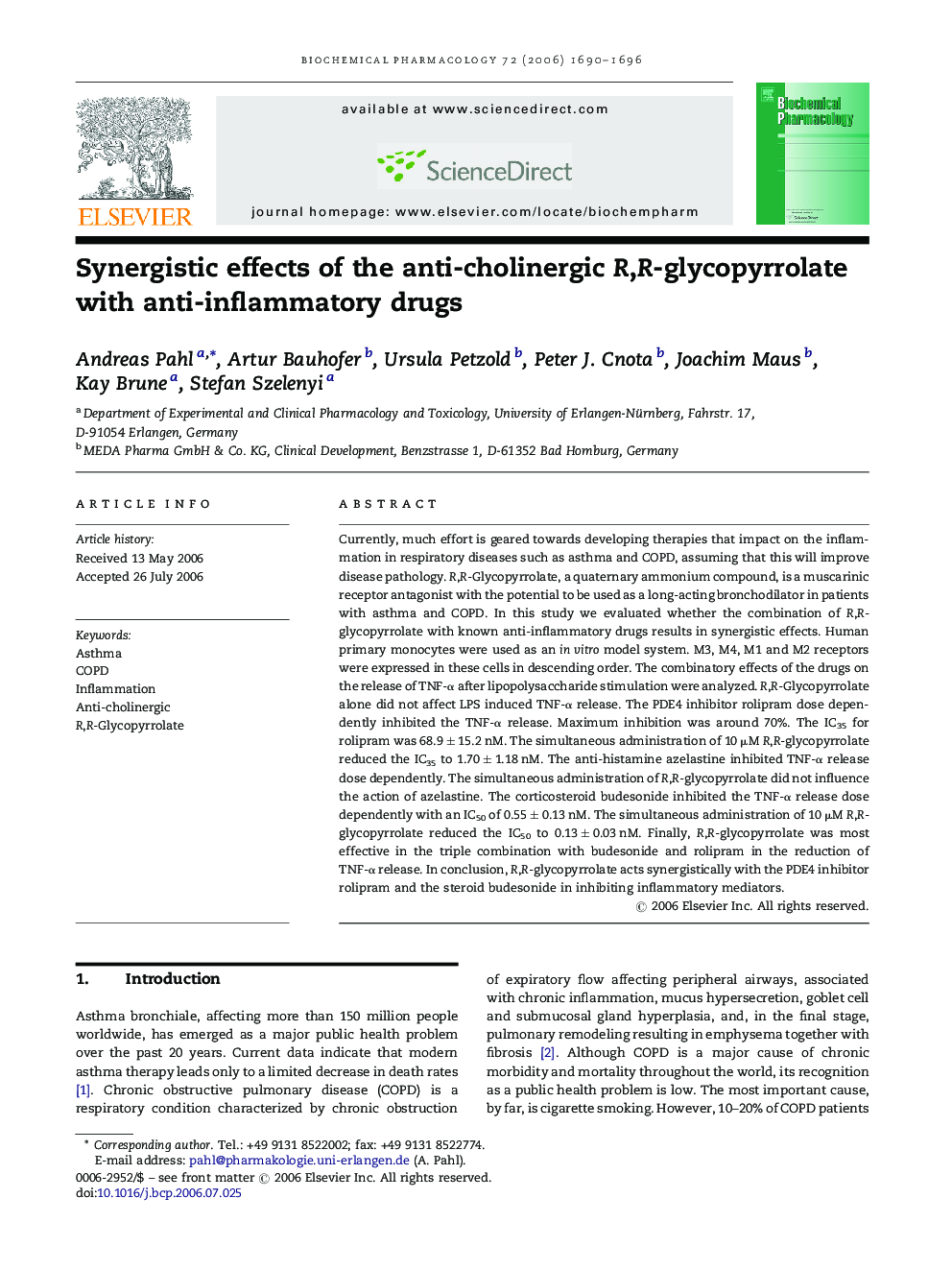| Article ID | Journal | Published Year | Pages | File Type |
|---|---|---|---|---|
| 2514975 | Biochemical Pharmacology | 2006 | 7 Pages |
Currently, much effort is geared towards developing therapies that impact on the inflammation in respiratory diseases such as asthma and COPD, assuming that this will improve disease pathology. R,R-Glycopyrrolate, a quaternary ammonium compound, is a muscarinic receptor antagonist with the potential to be used as a long-acting bronchodilator in patients with asthma and COPD. In this study we evaluated whether the combination of R,R-glycopyrrolate with known anti-inflammatory drugs results in synergistic effects. Human primary monocytes were used as an in vitro model system. M3, M4, M1 and M2 receptors were expressed in these cells in descending order. The combinatory effects of the drugs on the release of TNF-α after lipopolysaccharide stimulation were analyzed. R,R-Glycopyrrolate alone did not affect LPS induced TNF-α release. The PDE4 inhibitor rolipram dose dependently inhibited the TNF-α release. Maximum inhibition was around 70%. The IC35 for rolipram was 68.9 ± 15.2 nM. The simultaneous administration of 10 μM R,R-glycopyrrolate reduced the IC35 to 1.70 ± 1.18 nM. The anti-histamine azelastine inhibited TNF-α release dose dependently. The simultaneous administration of R,R-glycopyrrolate did not influence the action of azelastine. The corticosteroid budesonide inhibited the TNF-α release dose dependently with an IC50 of 0.55 ± 0.13 nM. The simultaneous administration of 10 μM R,R-glycopyrrolate reduced the IC50 to 0.13 ± 0.03 nM. Finally, R,R-glycopyrrolate was most effective in the triple combination with budesonide and rolipram in the reduction of TNF-α release. In conclusion, R,R-glycopyrrolate acts synergistically with the PDE4 inhibitor rolipram and the steroid budesonide in inhibiting inflammatory mediators.
